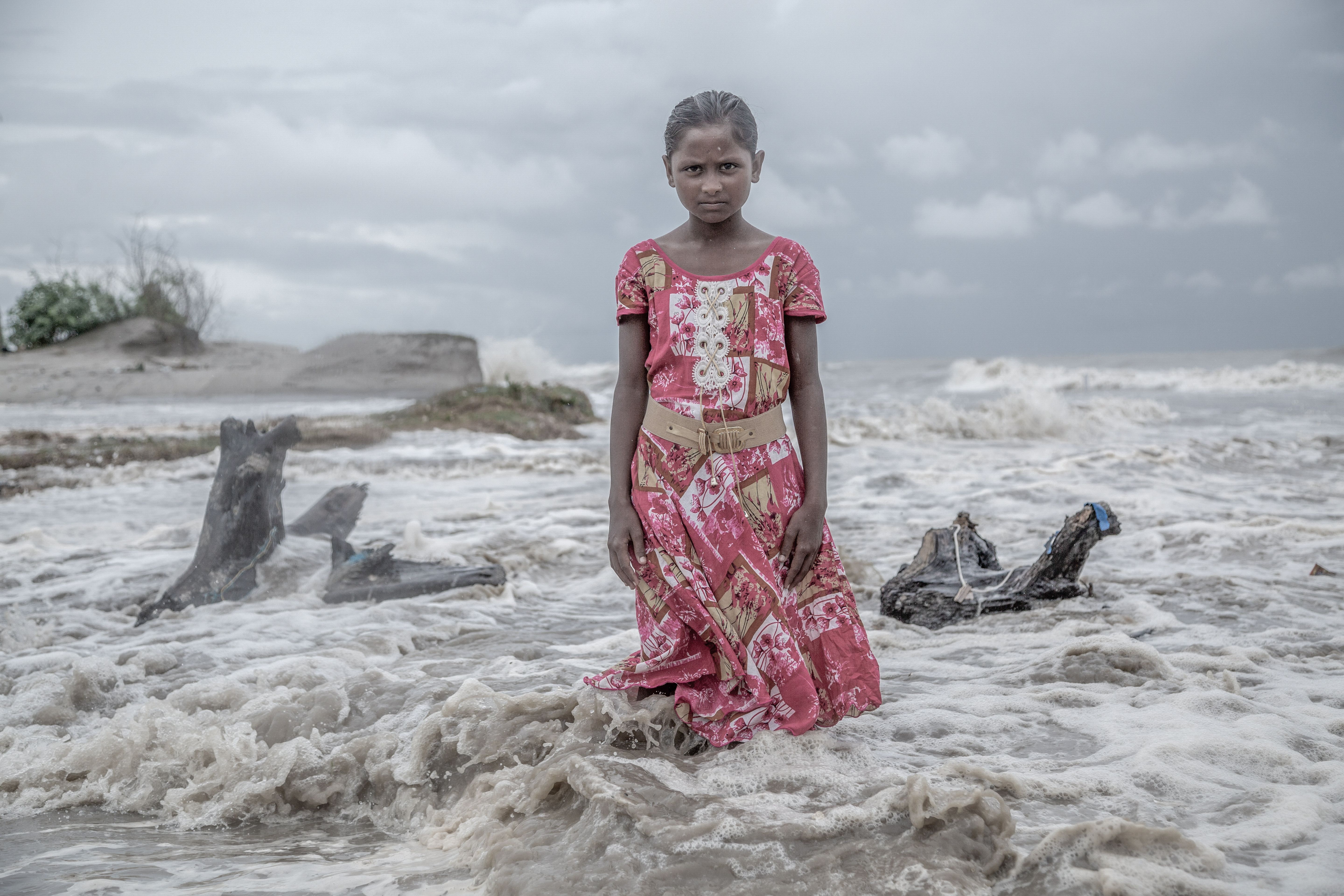Presentation
India • Born in 1983
Sundarbans, the Wrath of the Oceans
The Sundarbans form a unique delta shaped by the Ganges in south-east India. The region extends as far as southern Bengal and shares a border with Bangladesh. It is home to over 4,100 square kilometres of mangroves covering 102 islands. Of these, 54 are inhabited by 4.5 million people. In 1987, the Sundarbans were listed as a UNESCO World Heritage Site for their exceptional biodiversity.
Yet this fragile environment is exposed to a myriad of imminent dangers. Mangroves, which act as a buffer against storms and tidal waves, are shrinking at an alarming rate. Sea levels are rising inexorably, making the region increasingly vulnerable to climate disasters, exacerbating food and water shortages, and stifling agricultural productivity.
Supratim Bhattacharjee’s photos remind us of these unavoidable truths that we still refuse to see. Born in a region of the world that is particularly vulnerable to these tragedies, Indian photojournalist Supratim Bhattacharjee has documented environmental issues and their impact on people since the start of his career. Covering everything from soil erosion to salinisation of water tables and the rising numbers of climate refugees, the titles of his various projects in South Asia set the tone : « War for Water », « Sinking Sundarbans » and « Children in Hell ». Catastrophism? Sensationalism? Far from it, this is realism.
These islands are eroding an alarming pace. Between 2000 and 2020, the Sundarbans lost around 110 square kilometres of the mangroves that act as an essential natural shield for the entire region. It’s not a wave but a groundswell: the island of Lohachara, which used to be home to over 10,000 people, was permanently submerged in the 1980s. Its residents were forced to flee.
The world Supratim Bhattacharjee shows us isn’t tomorrow’s. It’s today’s.
CHEMIN DES LIBELLULES

© Supratim Bhattacharjee • Exhibition Sundarbans, the Wrath of the Ocean

